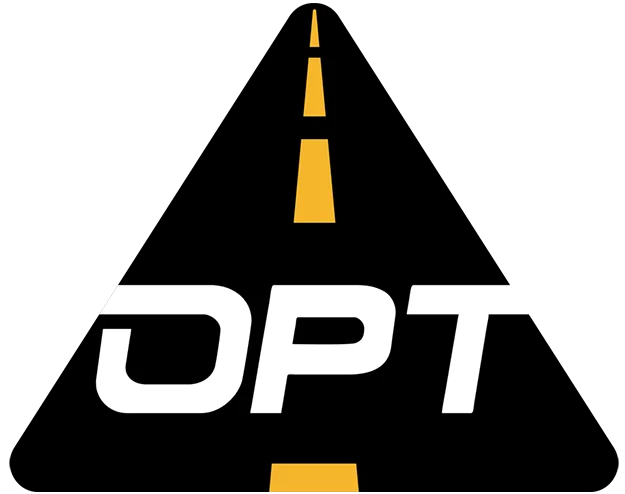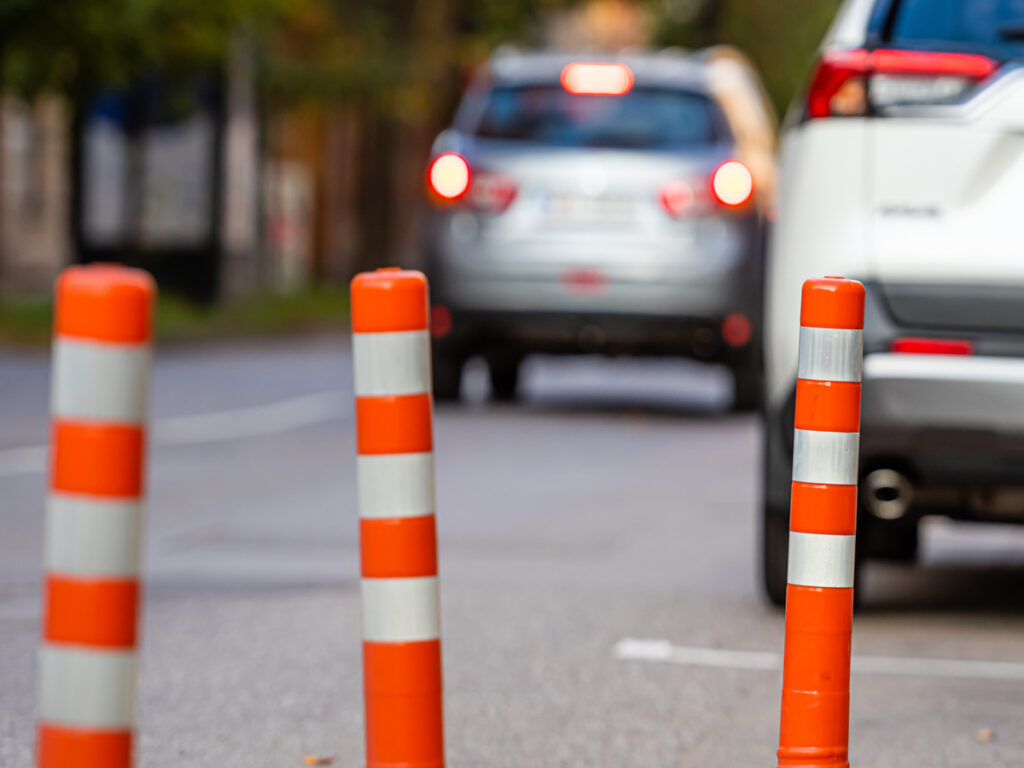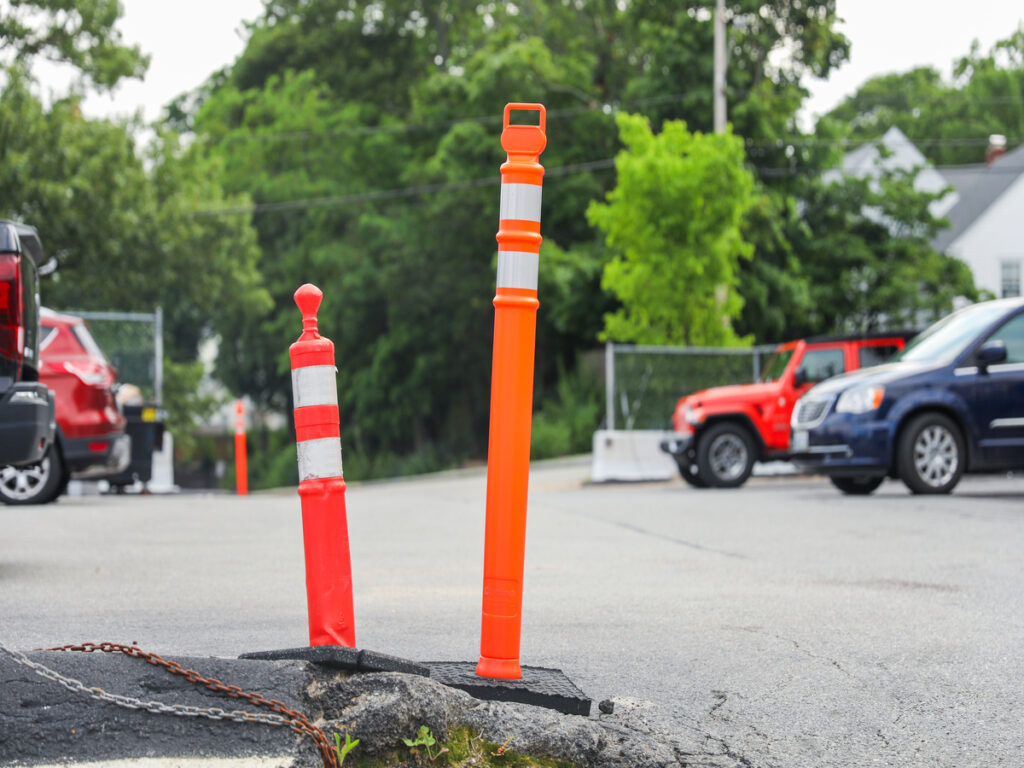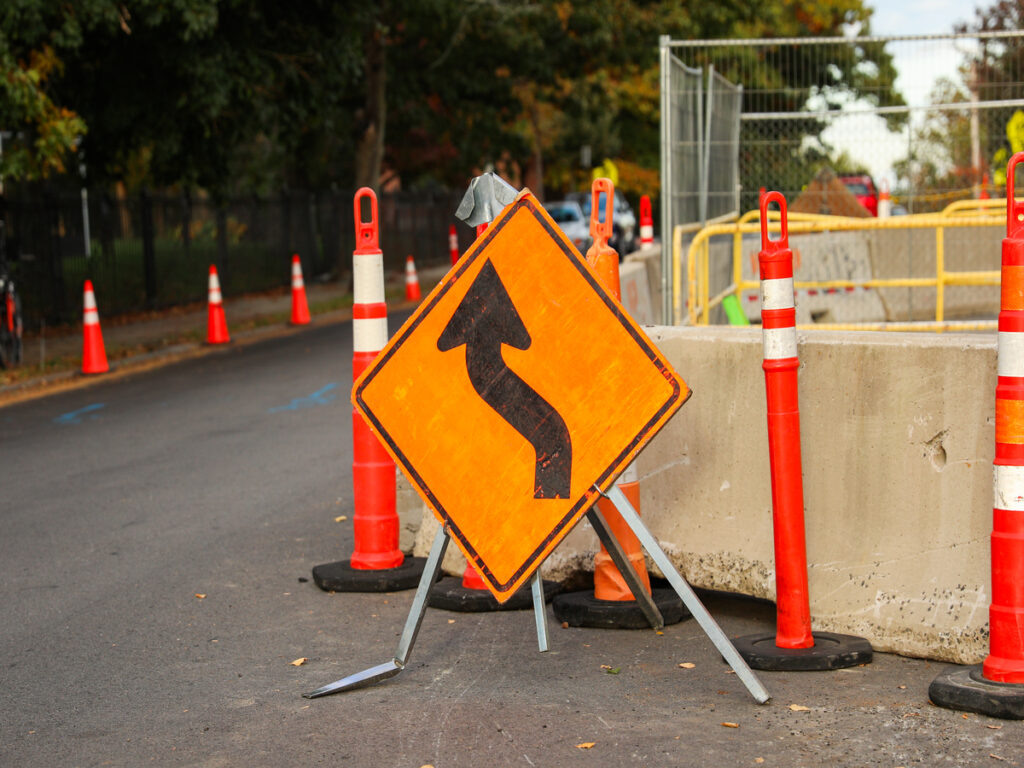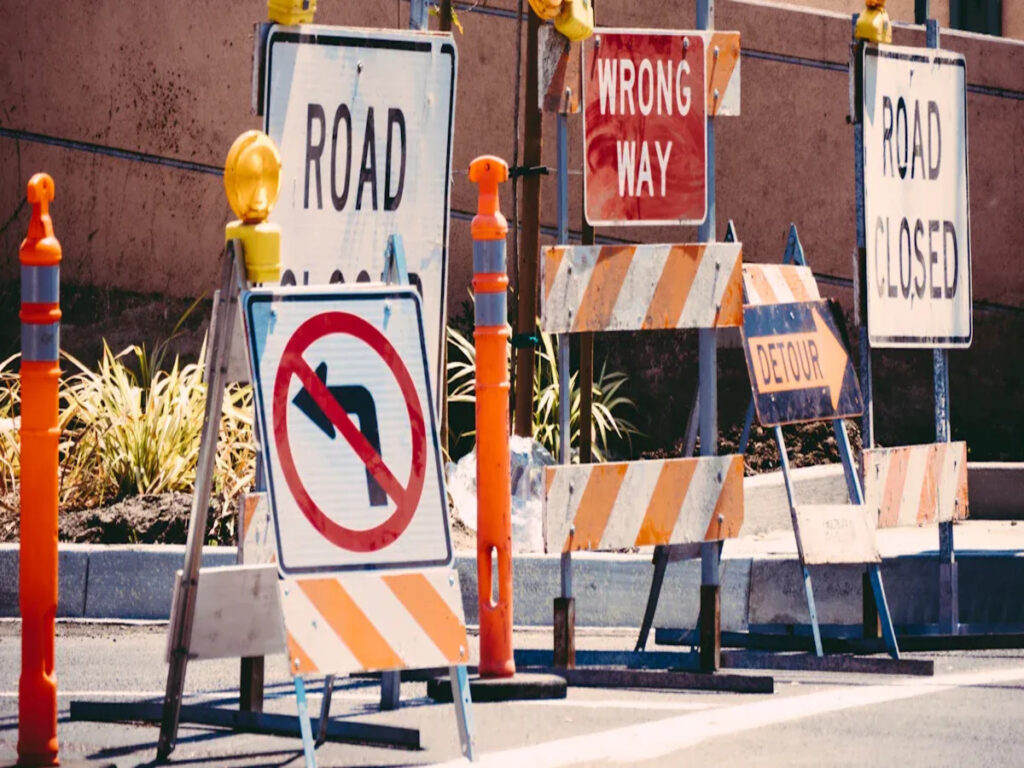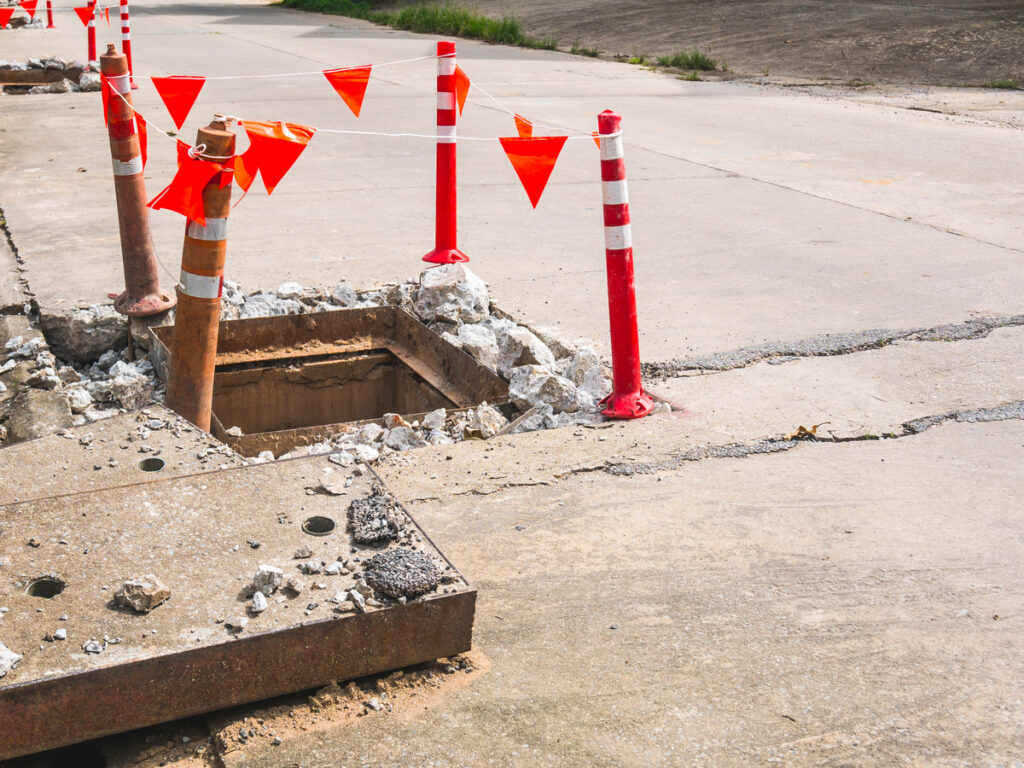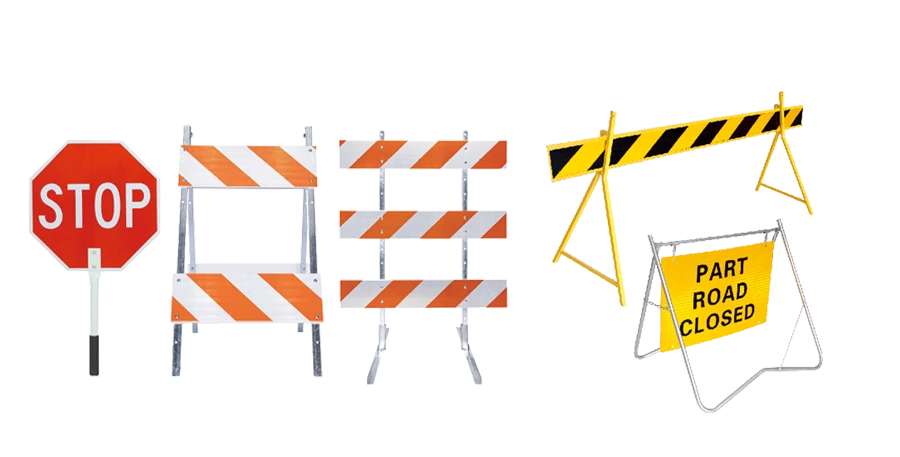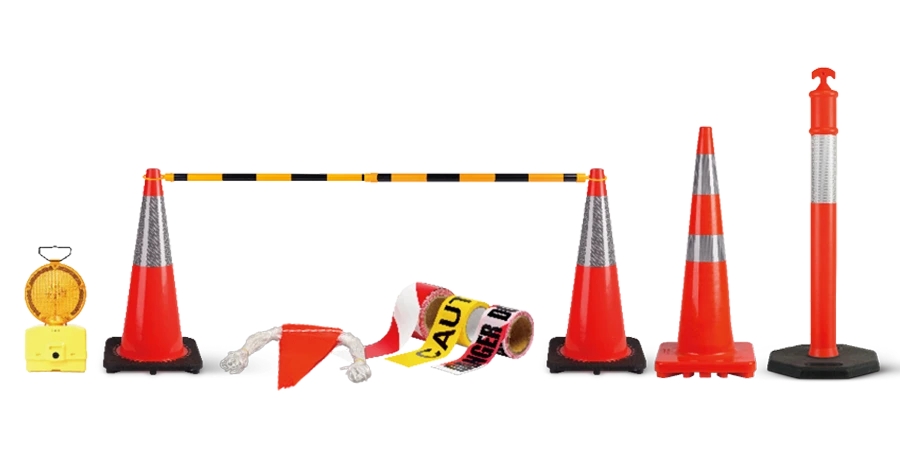
중동에서 일하는 것은 다른 언어 요구를 처리하는 것을 의미합니다.. 아랍어와 영어가 모두있는 표시가 사람들이 더 잘 이해하는 데 도움이됩니다.. 이 표시는 또한 모든 사람이 알고있는 상징을 사용합니다. 이로 인해 모든 근로자에게 안전 규칙이 명확 해집니다. 연구에 따르면 대부분의 사람들은 사물을 보면서 배웁니다. 그래서, 사진이있는 표시는 정말 잘 작동합니다. 이중 언어 표시가있는 OSHA 규칙에 따라 작업장이 더 안전합니다. 또한 모든 사람이 포함 된 느낌을받습니다. 아랍어-영어 징후를 사용하면 안전성이 향상됩니다, 의사소통, 규칙을 따릅니다.
Optraffic은 특정 요구에 맞는 맞춤형 간판 솔루션을 제공합니다.. 고유 한 직장 요구 사항을 위해 설계된 이중 언어 표지판 또는 표시가 필요한지 여부, Optraffic의 고품질, 내구성있는 징후는 안전과 규정 준수를 향상시키는 데 도움이됩니다. 오늘 저희에게 연락하여 맞춤형 사인 서비스를 탐색하고 직장 전체의 명확한 의사 소통을 보장하십시오..
주요 테이크 아웃
- 아랍어와 영어의 표시는 근로자를 안전하게 지키는 데 도움이됩니다.. 그들은 모든 사람이 규칙을 이해하고 사고를 예방하도록합니다.
- 표지판에 사진을 추가하면 이해하기 쉽게. 이것은 어느 언어로도 잘 읽지 못하는 근로자를 돕습니다..
- 이중 언어 표시를 사용하면 지역 규칙이 따릅니다, 벌금이나 지연을 피합니다. 또한이 지역의 문화에 대한 존중을 보여줍니다..
- 이 징후는 노동자들이 포함되고 중요하다고 느끼게합니다. 이것은 팀워크를 향상시키고 사람들을 직장에서 더 행복하게 만듭니다.
- 강한, 거친 중동의 날씨에서는 비바람에 견딜 수 있습니다. 그들은 시간이 지남에 따라 유용하고 돈을 절약합니다.
미국이 직면 한 도전. 중동 작업장의 회사
언어와 문화적 장벽
중동에서, 언어와 문화는 문제를 일으킬 수 있습니다. 많은 노동자들이 주로 아랍어를 사용합니다, 그러나 팀은 영어를 사용할 수 있습니다. 이 언어 격차는 안전 규칙이나 지침에 대한 혼동으로 이어질 수 있습니다.. 표시가 영어로만있는 경우, 아랍어 스피커는 이해하지 못할 수도 있습니다. 이것은 사고가 더 가능성이 높아질 수 있습니다.
문화적 차이도 중요합니다. 영어를 사용하는 장소에서 사용되는 일부 기호 나 문구는 아랍어로 작동하지 않을 수 있습니다.. 오해는 실수 나 지연을 유발할 수 있습니다. 예를 들어, 한 회사는 SLA를 영어에서 아랍어로 변경하기 위해 번역가가 필요했습니다.. 이것없이, 프로젝트가 지연되었습니다. 또 다른 예는 ERP 소프트웨어로만 영어로만 있습니다. 노동자들은 문화 디자인 차이로 인해 사용하기가 어렵다는 것을 알았습니다.. 이 예는 현지화 된 표시와 문서가 중요한 이유를 보여줍니다..
이러한 문제를 해결합니다, 아랍어와 영어로 표시를 사용하십시오. 이런 식으로, 모든 근로자는 중요한 정보를 이해할 수 있습니다. 모든 사람이 알고있는 상징을 추가하면 일을 더욱 명확하게 만들 수 있습니다..
규제 요구 사항 및 준수
중동 국가에는 안전 및 커뮤니케이션에 대한 엄격한 규칙이 있습니다.. 많은 법률에는 아랍어 텍스트를 포함하도록 표시가 필요합니다. 이러한 규칙을 무시하면 벌금이 부과되거나 프로젝트를 중단 할 수 있습니다.. 우리를. 회사는 이러한 현지 법률을 따라야합니다.
글로벌 표준, 좋다 OSHA, 또한 다양한 직장에서 명확한 의사 소통을 강조합니다. 이중 언어 표지판은 이러한 규칙을 충족하고 근로자를 안전하게 지키는 데 도움이됩니다.. 아랍어-영어 징후를 사용하면 법을 따르는 동안 지역 문화와 언어에 대한 존중을 보여줍니다..
좋은 이중 언어 표시가 법적 문제를 예방하고 안전을 향상시킬 수 있습니다.. 강력한 재료와 정확한 번역을 사용하여 거친 중동 날씨에 기호가 지속됩니다..
아랍어-영어 이중 언어 표시를 사용하는 장점
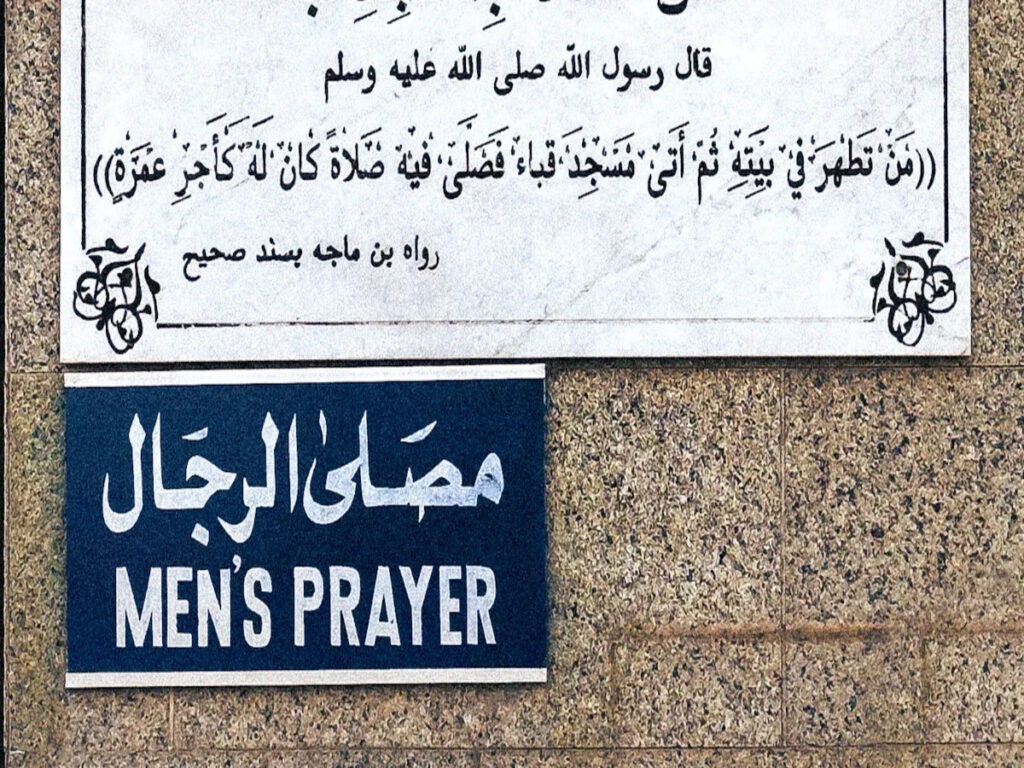
더 나은 안전성과 사고가 적습니다
이중 언어 표지판은 모든 사람에게 직장을 더 안전하게 만드는 데 도움이됩니다. 아랍어와 영어로 안전 규칙을 보여 주면 모든 근로자가 이해할 수 있습니다.. 이것은 중요합니다, 그들이 어떤 언어를 말하든 상관 없습니다. 박사. Matthew Casey는 여러 언어로 된 사인이 사고가 낮다는 것을 발견했습니다. 이것은 특히 건축이나 석유 및 가스와 같은 위험한 일자리에 도움이됩니다..
7 초마다, 누군가 직장에서 상처를받습니다. 이러한 부상 중 많은 부분을 피할 수 있습니다. 이중 언어 표시 사용은 사고를 방지하는 현명한 방법입니다.. OSHA는 다국어 표지판이있는 작업장에 있다고 말합니다 25% 적은 부상. 모두가 알고있는 상징을 추가하면 메시지를 더욱 명확하고 이해하기가 더 빠릅니다..
| 증거 유형 | 세부 |
|---|---|
| 부상 빈도 | 부상은 7 초마다 발생합니다, 종종 피할 수 있습니다. |
| 안전 전략 | 다국어 표지판은 사고가 효과적으로 낮아집니다. |
더 나은 의사 소통과 포용
이중 언어 표지판은 근로자가 포함되고 가치를 느끼는 데 도움이됩니다. 안전 규칙이 아랍어 및 영어로 된 경우, 모두가 존경받는다고 느낍니다. 이로 인해 근로자가 더 행복해지고 팀워크가 향상됩니다. 커뮤니케이션이 쉬울 때 다양한 팀이 더 잘 작동합니다..
연구에 따르면 이중 언어 표지판은 근로자가 안전 규칙을 더 잘 이해하는 데 도움이됩니다.. 그들은 또한 직원들이 자신의 직업에 더 만족감을 느끼게합니다.. 예를 들어, 47% 밀레 니얼 세대의 일자리를 따를 때 다양성을 돌보고 있습니다. 이중 언어 표시를 사용하면 가치가 포함되어 있습니다, 좋은 노동자를 유치하고 유지하는 데 도움이됩니다.
이중 언어 표지판을 사용하면 생산성이 높아집니다. 포함 된 노동자들은 함께 더 잘 일합니다. 이것은 프로젝트에 대한 더 나은 결과를 가져옵니다. 또한 회사가 공정성과 안전에 관심이 있음을 보여줍니다., 평판 향상.
규칙을 따르고 문제를 피합니다
아랍어-영어 표지판은 현지 법률과 글로벌 표준을 충족시키는 데 도움이됩니다. 많은 중동 국가에는 아랍어를 포함하기 위해 안전 징후가 필요합니다.. 이러한 규칙을 무시하면 벌금이나 지연이 발생할 수 있습니다. ANSI Z535 또한 위험을 명확하게 설명하기 위해 기호와 여러 언어를 사용하는 것을 제안합니다..
명확한 이중 언어 징후는 직장 부상의 가능성을 낮추십시오. OSHA는 모든 근로자가 이해하기 쉬워야한다고 말합니다.. 언어 격차를 해결하면 사고와 법적 위험이 줄어 듭니다. 이것은 지역 문화에 대한 존중을 보여주고 회사를 문제로부터 안전하게 유지합니다..
팁: Strong을 사용하십시오, 거친 중동 날씨에 대한 비바람 이중 언어 표지판. 번역이 정확하고 최상의 결과를 위해 설계가 전문적인지 확인하십시오..
이중 언어 표시를 설계하고 구현하기위한 모범 사례
효과적인 설계 고려 사항
좋은 이중 언어 표지판을 만드는 데 신중한 생각과 계획이 필요합니다. 첫 번째, 결정 언어 포함합니다. 중동에서, 이것은 일반적으로 의미합니다 아라비아 말 그리고 영어. 근로자에 대한 데이터를 사용하여 자신의 요구에 맞게 일치합니다. 혼란을 피하기 위해 단어를 짧고 간단하게 유지하십시오.
모든 표시는 동일하게 보일 것입니다. 같은 글꼴을 사용하십시오, 그림 물감, 그리고 레이아웃. 이로 인해 근로자가 신속하게 표지판을 이해할 수 있습니다.. 텍스트와 함께 그림이나 기호를 추가하십시오. 이것들은 어느 쪽에서도 읽지 않을 수있는 사람들을 돕습니다. 언어. 예를 들어, 에이 “금연” 상징 아라비아 말 그리고 영어 텍스트는 모두에게 명확합니다.
표지판은 읽기 쉬워야합니다. 둘 다 명확한 글꼴을 선택하십시오 언어. 멋진 아랍어 쓰기는 멋져 보이지만 읽기가 어려울 수 있습니다.. 표시가 불분명하지 않은 경우에만 사용하십시오.. 텍스트를 올바르게 정렬하십시오.아라비아 말 오른쪽에서 왼쪽을 읽습니다, 그리고 영어 왼쪽에서 오른쪽으로 읽습니다. 텍스트가 멀리서 볼 수있을만큼 충분히 커야, 특히 큰 작업장에서.
항상 실수에 대한 번역을 확인하십시오. 전문가를 고용하여 올바르게 번역하십시오. 근로자와 함께 표시를 테스트하여 명확한 지 확인하십시오.. 테스트는 표지판을 설치하기 전에 문제를 찾고 수정하는 데 도움이됩니다..
간판의 문화적 적절성
문화를 존중하는 것은 이중 언어 징후를 만들 때 매우 중요합니다. 실수를 피하기 위해 현지 전통에 대해 배우십시오. 일부 색상이나 기호는 다른 것을 의미 할 수 있습니다 아라비아 말 문화. 이러한 세부 사항을 아는 것은 존중하고 유용한 신호를 만드는 데 도움이됩니다.
다중 표지판 언어 모든 사람이 포함 된 느낌을 돕습니다. 그들은 비 원어민 연사를 환영하고 존경 받게 만듭니다. 예를 들어, 사용 아라비아 말 서예는 현지 문화에 대한 존중을 신중하게 보여줍니다. 읽기 어려운 멋진 글꼴을 사용하지 마십시오.
현지의 요구에 맞는 표지판을 만듭니다. 현지 말하기 방식과 일치하는 단어와 스타일을 사용하십시오.. 일부 용어가 근로자를 혼동 할 수있는 경우 추가 세부 사항을 추가하십시오. 예를 들어, 기술 단어를 간단히 설명하여 명확하게 설명하십시오.
지역 근로자와 지도자에게 그들의 의견을 물어보십시오. 그들의 피드백은 징후를 향상시키는 데 도움이 될 수 있습니다. 시간이 지남에 따라 표지판을 개선하기 위해 제안에 따라 디자인을 계속 업데이트하십시오..
팁: 표지판에서 가장 중요한 안전 메시지를 강조하십시오. 근로자가 즉시 눈에 띄도록 눈에 띄도록하십시오..
OSHA가 이중 언어 표시 준수 보장
이중 언어 표지판에 대한 OSHA 규칙
OSHA 규칙에 따라 직장은 직장을 모두 더 안전하고 공정하게 만듭니다.. OSHA는 이중 언어 표시가 직접 필요하지 않습니다. 그러나 모든 근로자에게는 안전 정보가 명확해야한다고 말합니다.. 이것은 모든 근로자가 안전 세부 사항을 이해해야한다는 것을 의미합니다, 그들의 언어에 상관없이. 중동에서, 어디 아라비아 말 일반적입니다, 표지판 아라비아 말 그리고 영어 매우 중요합니다.
메모: OSHA는 ANSI Z535 규칙과 함께 작동합니다. 이들은 모든 사람이 더 잘 이해하도록 돕기 위해 단어와 함께 기호를 사용하는 것이 좋습니다..
OSHA 규칙에 이중 언어 표시가 중요한 이유
- 잘못된 의사 소통은 사고를 유발할 수 있습니다. 부상은 7 초마다 발생하지만 명확한 징후로 피할 수 있습니다..
- OSHA는 모든 근로자가 따라야 할 안전 교육이 쉬워야한다고 말합니다..
- 이중 언어 표지판 사용은 안전과 공정성에 관심이 있음을 보여줍니다.. 또한 법적 문제의 가능성을 낮 춥니 다.
주요 OSHA 및 ANSI 규칙에 대한 규칙
| 규칙 | 그것이 의미하는 바 |
|---|---|
| OSHA 규칙 1910.145 (이자형)(2) | 표지판은 짧아야합니다, 분명한, 읽기 쉽습니다. |
| ANSI Z535 규칙 | 표시가있는 기호를 사용하여 표지판을 쉽게 이해할 수 있습니다.. |
| 다국어 표지판 | 비 원어민이 안전 정보를 동등하게 이해하도록 도와줍니다. |
이 규칙을 준수함으로써, OSHA 표준을 충족하고 안전성을 향상시키는 OSHA 안전 징후를 만들 수 있습니다.. 예를 들어, ANSI Z535.3-2002는 단지 단어보다 상징이 어떻게 더 잘 작동하는지 설명합니다.. 이것은 말하는 근로자에게 도움이됩니다 아라비아 말 그러나별로 영어.
다음 규칙이 도움이되는 이유
이중 언어 표시를 사용하면 많은 이점이 있습니다:
- 언어 문제를 해결함으로써 사고를 방지합니다.
- 그것은 다른 문화에 대한 존중을 보여줍니다, 노동자를 더 행복하게 만듭니다.
- 벌금을 피하고 규칙을 위반하는 것이 지연됩니다.
팁: 강력한 재료를 사용하여 거친 중동의 날씨를 다루기위한 표지판. 최상의 결과를 위해 번역이 정확하고 존중하는지 확인하십시오..
이중 언어 표시를 사용하여, 당신은 OSHA 규칙을 따르고 직장을 모두에게 더 안전하고 환영합니다..
OSHA 안전 징후에 대해 자세히 알고 싶고 구인 사이트에서의 법적 책임을 피하는 데 도움이되는 방법? 블로그를 확인하십시오: “OSHA 안전 징후가 구직 사이트의 법적 책임을 피하는 데 도움이되는 방법“ OSHA 호환 간판의 중요성에 대한 자세한 통찰력.
품질 아랍어-영어 이중 언어 표시 선택
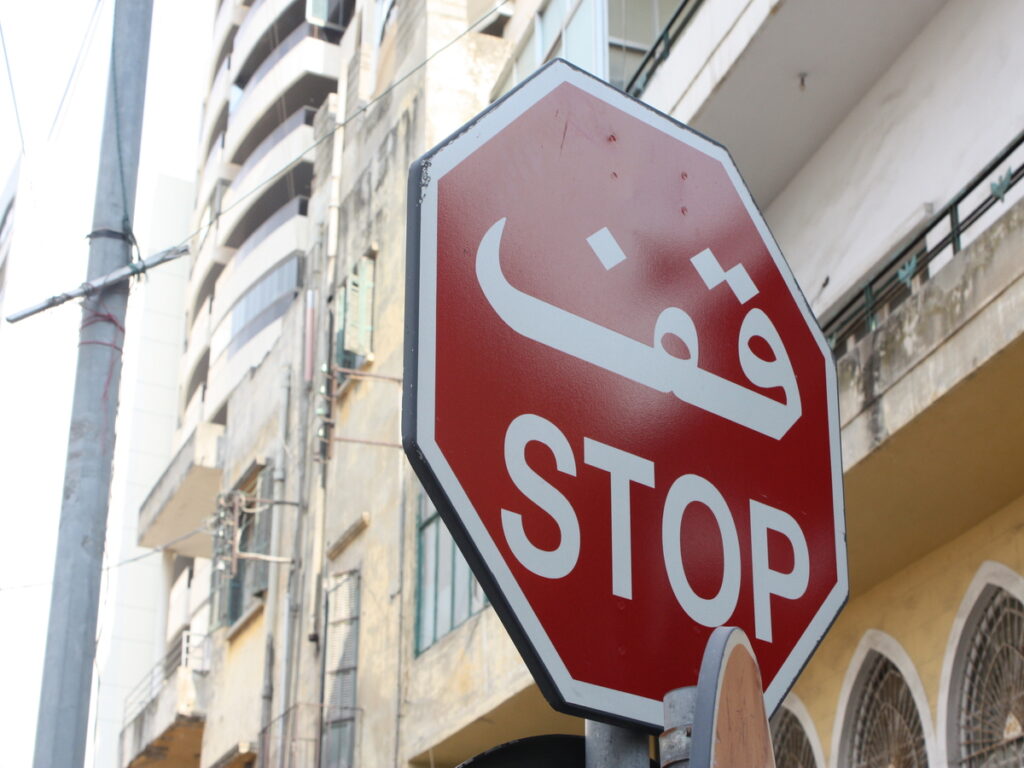
이중 언어 표시를 구입할 때 찾아야 할 사항
올바른 표지판을 선택하려면 신중한 생각이 필요합니다. 표지판은 강해야합니다, 분명한, 문화에 맞습니다. 재료를 확인하여 시작하십시오. 중동에서, 날씨는 힘들 수 있습니다. 표지판에 알루미늄이나 좋은 플라스틱을 사용하십시오. 이 재료는 열을 처리합니다, 모래, 그리고 물이 잘, 오래 지속됩니다.
표지판을 읽기 쉽습니다. 텍스트는 멀리서 볼 수있을 정도로 커야합니다.. 둘 다 명확한 간단한 글꼴을 사용하십시오 아라비아 말 그리고 영어. 근로자를 혼란스럽게 할 수있는 멋진 글꼴을 피하십시오. 메시지가 명확하게 배경에 눈에 띄는 색상을 선택하십시오..
번역이 올바른지 확인하십시오. 나쁜 아라비아 말 번역은 혼란을 유발할 수 있습니다. 메시지가 명확하고 문화에 맞는지 확인하기 위해 전문가를 고용합니다.. 기호도 추가하십시오. 상징은 근로자가 빠르게 이해하는 데 도움이됩니다, 그들이 잘 읽을 수 없더라도.
마지막으로, 현지 규칙을 따르십시오. 많은 중동 국가가 필요합니다 아라비아 말 안전 징후에. 벌금이나 지연과 같은 문제를 피하기 위해 표지판이 규칙을 충족하는지 확인하십시오..
사전 디자인 된 이중 언어 표시 구매의 이점
사전 제작 된 이중 언어 표지판을 구매하는 것은 많은 이점이 있습니다. 이 이중 언어 안전 징후는 시간을 절약합니다. 직접 디자인하거나 번역 할 필요가 없습니다. 그들은 안전 표준을 사용할 준비가되어 있습니다.
사전 제작 된 표지판도 비용이 적게 듭니다. 맞춤 표지판은 비싸 질 수 있습니다, 특히 전문 번역. 사전 디자인 된 이중 언어 안전 징후는 저렴한 가격으로 좋은 품질을 제공합니다..
또 다른 장점은 신뢰성입니다. 좋은 공급 업체가 좋아요 광교통 현지 및 글로벌 규칙을 따르는 신호를 만드십시오. 이 이중 언어 안전 징후는 정확합니다 아라비아 말 번역과 명확 영어 텍스트. 그들은 또한 중동 날씨에 잘 작동하는 강력한 재료를 사용합니다..
사전 제작 된 이중 언어 안전 징후를 사용하면 일관성이 유지됩니다. 근로자는 이중 언어 안전 징후를 쉽게 인식 할 것입니다, 안전 및 커뮤니케이션을 향상시킵니다. 이렇게하면 직업이 더 쉬워지고 다른 작업에 집중할 수 있습니다..
팁: 이중 언어 간판을 아는 신뢰할 수있는 공급 업체로부터 사전 제작 된 이중 언어 안전 징후를 구입하십시오.. 이것은 좋은 품질을 보장하고 현지 법률을 따릅니다.
실제 사례 연구: 중동 프로젝트에서 이중 언어 표지판의 성공 사례
건설 산업 사례
이중 언어 안전 징후는 건설 프로젝트에서 크게 도움이되었습니다. 미국. 중동 건설 회사는 근로자 커뮤니케이션에 어려움을 겪었습니다.. 많은 노동자들이 아랍어를 사용했습니다, 그러나 안전 규칙은 영어로만 이루어졌습니다. 이로 인해 혼란과 지연이 자주 발생했습니다.
이 회사는 작업장에서 아랍어-영어 표지판을 추가했습니다. 이 이중 언어 안전 징후는 명확한 안전 규칙과 공통 기호를 보여주었습니다.. 노동자들은 새로운 징후를 빨리 이해했습니다. 혼란이 떨어졌습니다, 안전 규칙을 따르는 개선. 6 개월 후, 직장 사고가 줄어들 었습니다 30%. 노동자들은 또한 그들의 요구가 고려 되었기 때문에 더 행복하다고 느꼈다.
다른 건설 회사는 대피 훈련에 이중 언어 안전 징후를 사용했습니다.. 소방 훈련 중, 노동자들은 아랍어-영어 지시를 쉽게 따랐다. 드릴은 이전보다 더 빨리 끝났습니다. 이것은 이중 언어 표시가 비상 사태에 어떻게 도움이되는지 보여주었습니다.
석유 및 가스 산업 이야기
석유 및 가스 산업, 위험으로 유명합니다, 또한 이중 언어 표지판의 혜택. 박사. 매튜 케이시 2017 연구에 따르면 다국어 표지판이있는 작업장이 발견되었습니다 25% 더 적은 사고. 이것은 이중 언어 표시가 다양한 팀의 안전성을 향상 시킨다는 것을 보여줍니다.
One oil company in the Middle East used Arabic-English signs at drilling sites. These signs gave hazard warnings, equipment instructions, and emergency steps. Workers made fewer mistakes with machinery because they understood the signs better.
Another example is from offshore platforms. 미국. company added bilingual signs for safety drills. The signs used text and symbols, helping both Arabic and English speakers. The drills became more efficient, and workers felt more confident.
These examples show how bilingual signs improve safety, 의사소통, and work performance. Using Arabic-English signs creates safer and more inclusive workplaces.
Bilingual signs are important for making workplaces safer and fairer. They help Arabic and English speakers understand safety rules clearly. 미국에서, many workers are from other countries. 이것은 다양한 팀에게 명확한 표시가 필요한 이유를 보여줍니다.. 두 언어로 된 징후는 혼란을 멈 춥니 다, 더 낮은 사고, 안전 규칙을 따르십시오. OSHA는 OSHA 안전 징후가 영어가 아닌 경우 주요 언어 노동자에게 사용해야한다고 말합니다..
이중 언어 표시를 사용하면 안전이 향상되고 모든 사람이 포함됩니다. 또한 법을 따르는 데 도움이됩니다. 이 표시를 추가하면 근로자에 관심이 있고 좋은 일을하는 것을 보여줍니다.. 지금 시작하여 직장을 더 안전하고 더 나은.
FAQ
이중 언어 징후는 무엇입니까?, 그리고 왜 그들이 중요한가??
이중 언어 표시는 두 가지 언어로 정보를 보여줍니다, 아랍어와 영어처럼. 그들은 근로자가 안전 규칙을 이해하도록 돕습니다, 지도, 그리고 경고. 이 징후는 의사 소통을 향상시킵니다, 더 낮은 사고, 그리고 현지 및 글로벌 규칙을 따르십시오.
이중 언어 표지판은 작업장 안전을 어떻게 향상시킬 수 있습니까??
이중 언어 표지판은 모든 사람에게 안전 지침을 명확하게 만듭니다. 아랍어를 사용하는 근로자는 아랍어와 영어로 작성된 규칙을 이해할 수 있습니다.. 이것은 혼란을 줄이고 사고를 예방하는 데 도움이됩니다.
이중 언어 표지판을 설계 할 때 무엇을 고려해야합니까??
표지판을 읽기 쉽습니다. 아랍어와 영어 모두에 간단한 글꼴과 큰 텍스트를 사용하십시오.. 모두가 알고있는 기호를 추가합니다. 정확성과 문화적 존중에 대한 번역을 확인하십시오. 근로자와 함께 표시를 테스트하여 명확하게 확인하십시오..
중동의 법에 의해 요구되는 이중 언어 징후?
예, 많은 중동 국가에는 아랍어를 포함하기 위해 안전 징후가 필요합니다.. 이중 언어 징후는 OSHA와 같은 현지 법률 및 글로벌 규칙을 따릅니다.. 이것은 벌금과 프로젝트 지연을 피합니다.
고품질 이중 언어 표지판을 어디서 살 수 있습니까??
신뢰할 수있는 안전 공급 업체로부터 이중 언어 표시를 구입할 수 있습니다. 힘든 날씨를 다루는 강한 재료로 만든 표지판을 찾으십시오.. 그들이 올바른 아랍어 및 영어 번역을 가지고 있는지 확인하고 안전 표준을 충족하십시오..
